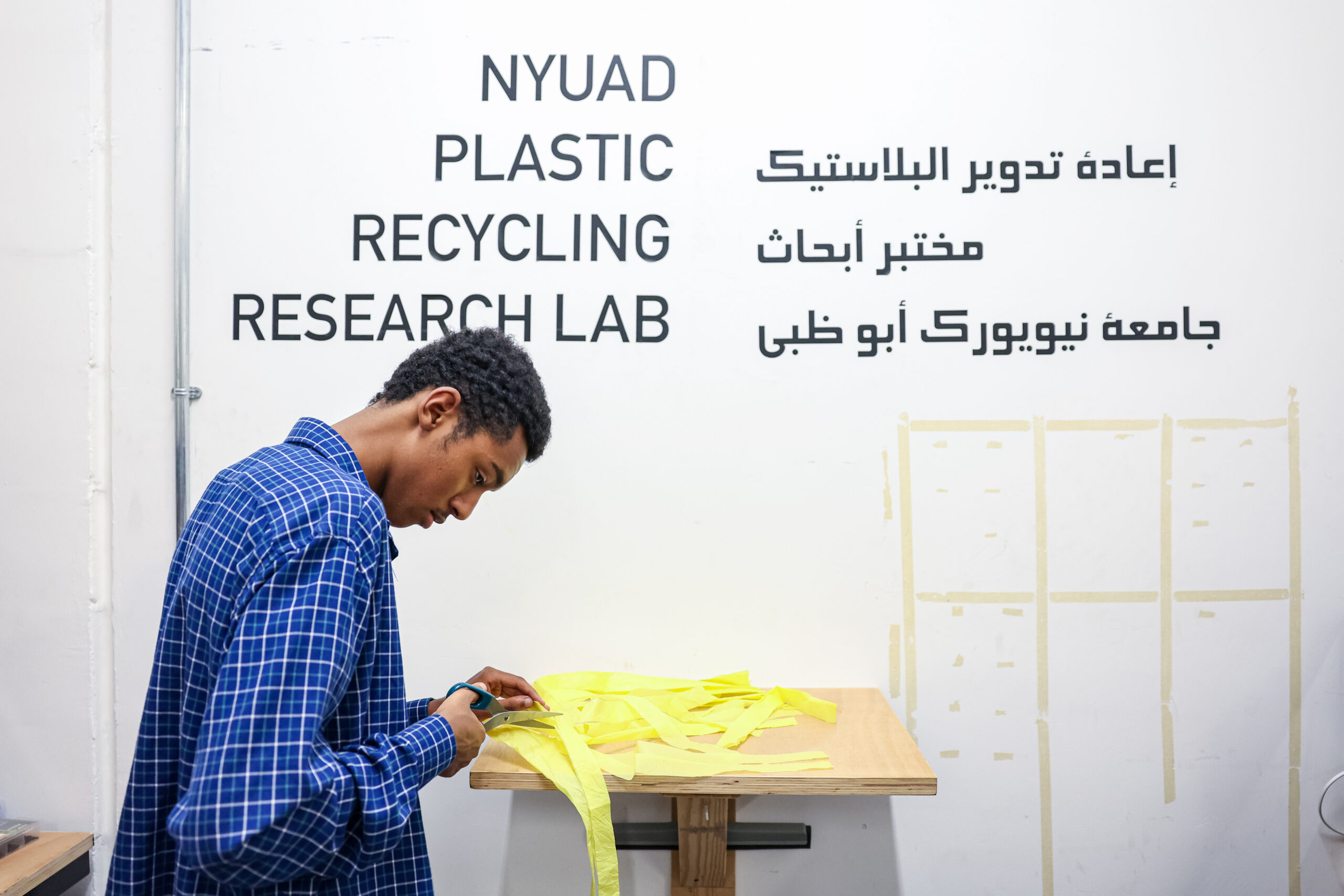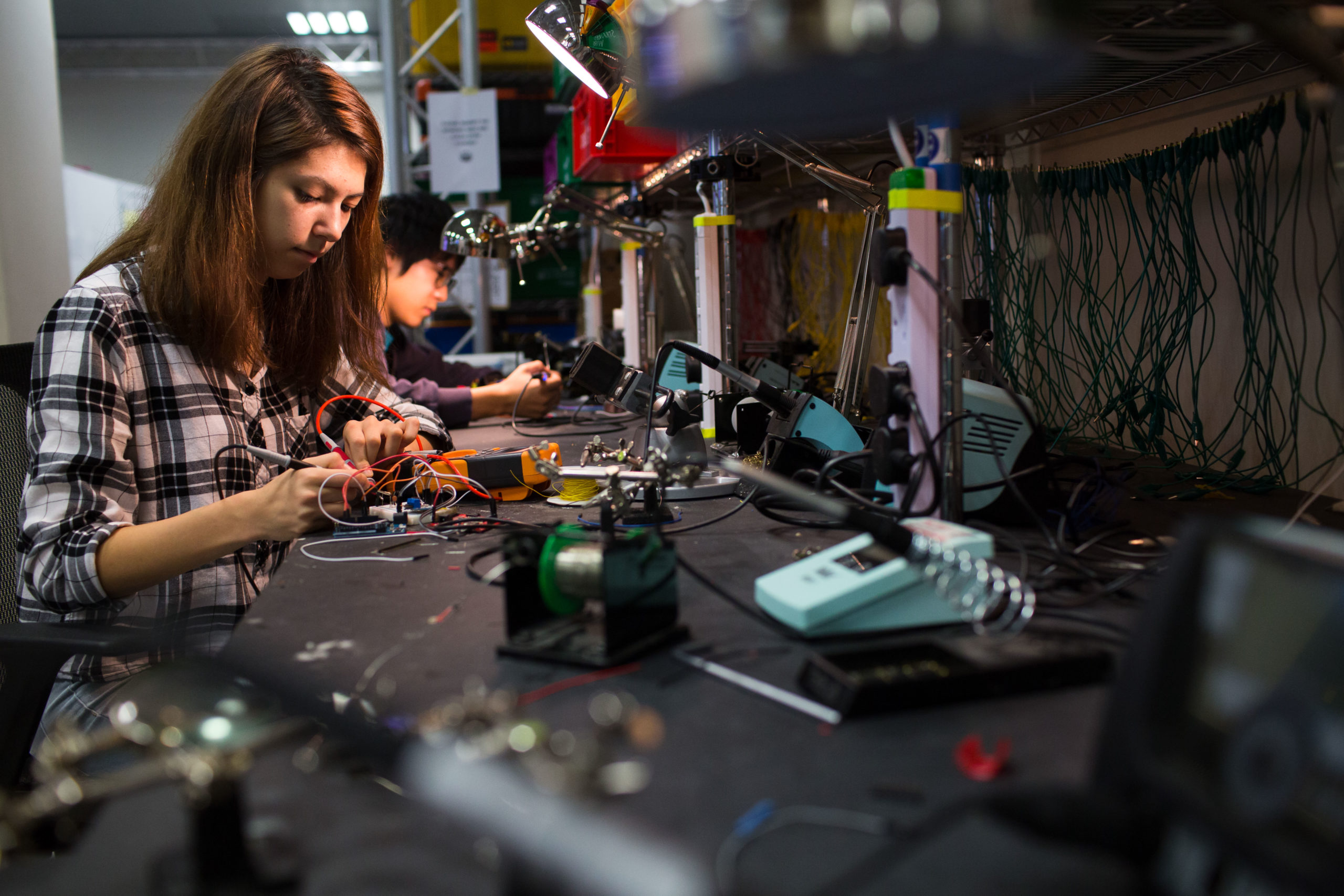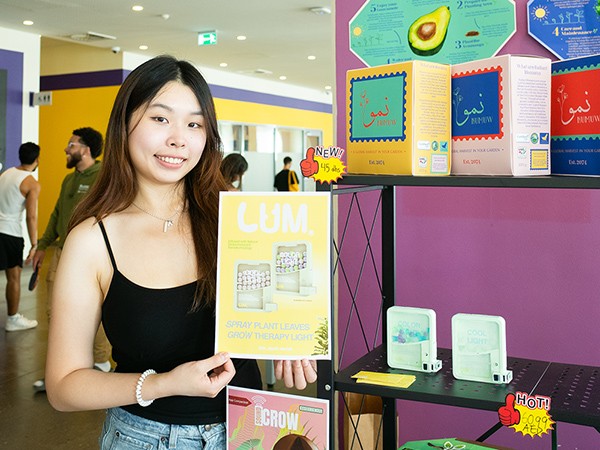
Studying away is already one of life’s greatest adventures. And at NYU Abu Dhabi, you can be both a world traveler and a pioneering inventor. In the class Manus et Machina, students embark on a semester-long journey to design and build their own machine. Throughout the course, students learn about how technology and machines have influenced art, design, and human life over the centuries. Then, using 3D printers, they create a prototype to bring their ideas to life. “This course is ideal for anyone with an interest in the relationship between people and technology and its broader implications,” says Professor Khulood Alawadi, who teaches the course. “It is designed for students who are eager to step outside their comfort zones, push their imaginations, and experiment with their ideas.”
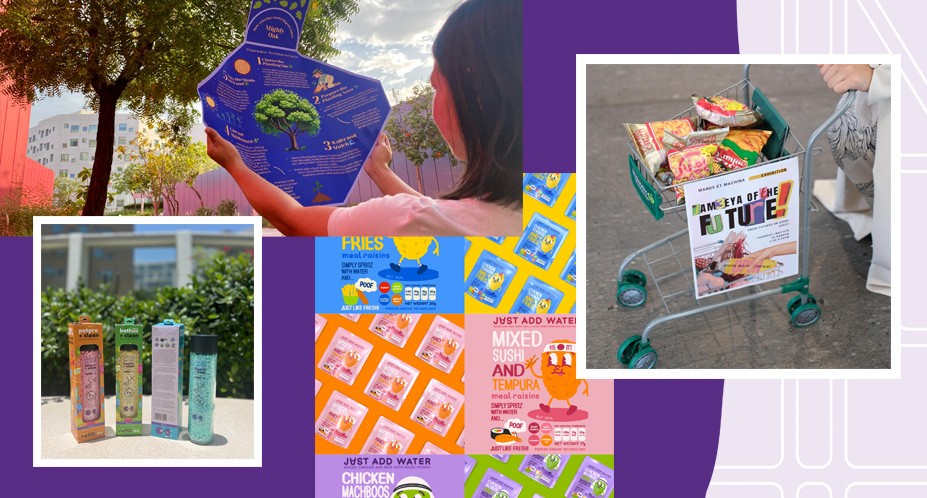
Pushing the Right Buttons
Each semester, students craft their machines based on an assigned theme that reflects current global events or initiatives within the United Arab Emirates (UAE). Most recently, Alawadi asked students to design a machine based on a specific aisle in the hypermarket, which combines a supermarket and department store. Lesley Manokore, an Interactive Media Arts major at NYU Shanghai, created a pest deterrent device that uses microfrequencies. “I chose this because I wanted to solve the issue of pesticides and the harmful health effects they can have on plants and humans,” he explains. “It helped me with the idea of speculative design and the concepts of what may and may not be realistic.”
At the same time, Sissy Li created a nanotechnology-infused spray to make indoor plants emit therapy-grade light to keep people focused. She’s an Interactive Media Arts major and Creativity and Innovation minor at NYU Shanghai. Looking back on her process, she recalls Professor Alawadi’s challenge: “It stayed in my head throughout the entire design process: how can I push my project to be something that does not exist today but can be proven possible through precise technologies?” This question continually reminded her not to limit herself and to be open to design pivots. “It’s a lot of work,” she adds. “But it’s worth it in the end.”
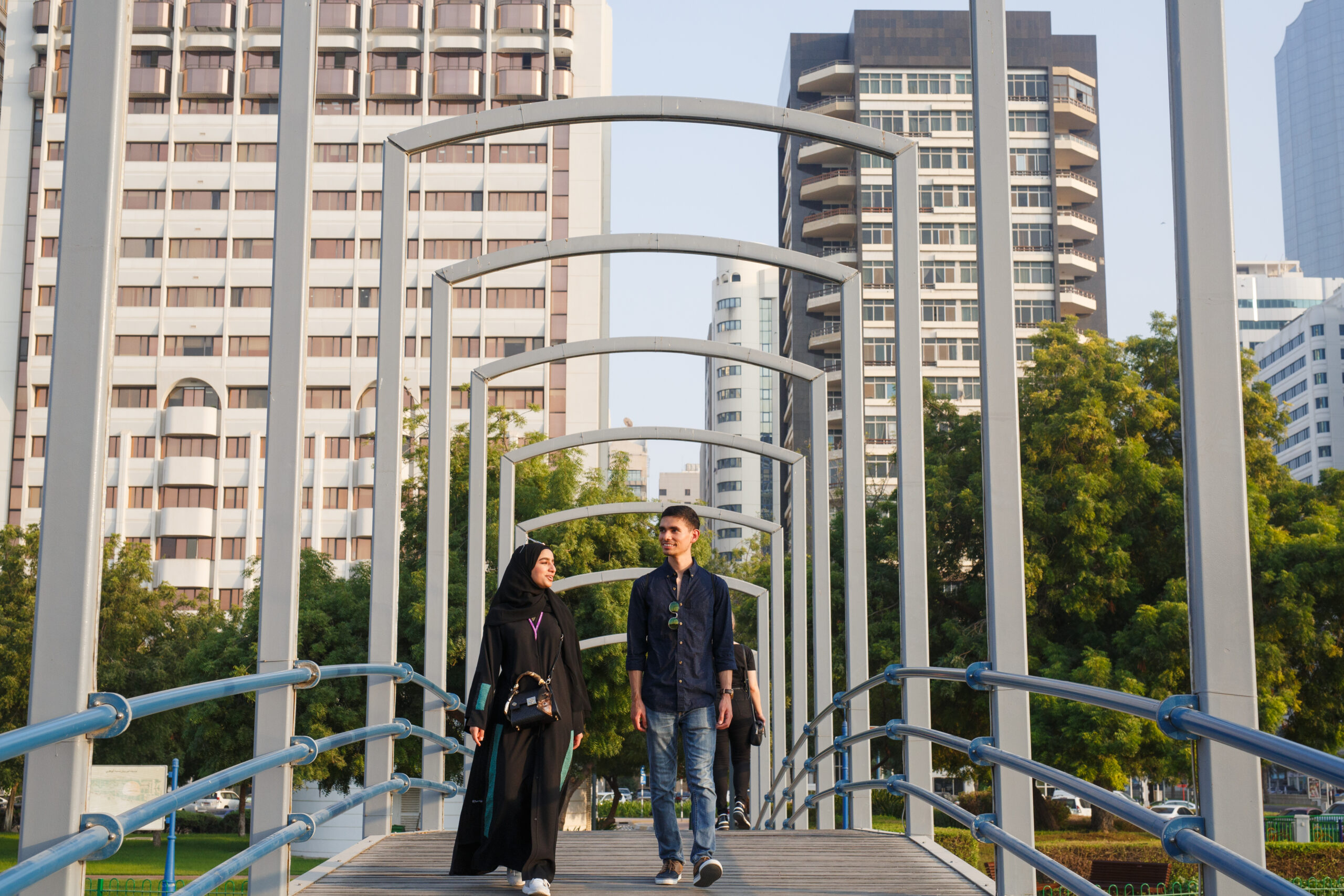
A Well-Programmed Adventure
The innovative city of Abu Dhabi provides the perfect backdrop for Manus et Machina, offering inspiration around every corner. For instance, Alawadi brought a professional magician—who is also a design consultant—to speak to the class. “He introduced ways in which they can incorporate magic into their projects,” explains Alawadi. In addition, the students spent a day at the Museum of the Future. Here, they explored human potential through an immersive and interactive trip to 2071. “It was very inspiring and helped us develop our ideas,” notes Lesley.
What’s more, last semester students visited a local UAE hypermarket to observe their assigned aisle. Says Sissy, “During the trip, I discovered that existing garden products are mainly for personal leisure. So, I began the design process by researching the macrotrends of the future and existing gardening technology and trends. As an emerging product designer, I’m driven by creating products that can aid human experiences.”
Blueprints for Tomorrow
For students like Sissy and Lesley, Manus et Machina is more than just a course. It’s a journey of exploration, innovation, and growth. “This course not only strengthened my career interest in design but also supported my personal goals of wanting to create products for a better future,” concludes Sissy. “The idea of seeing the future is far and absurd. But with speculative design, we can understand realistically what the future can hold. That’s what I find the most fascinating about doing a speculative design project this semester: it’s like I got a sneak peek into the future from 2024.”

